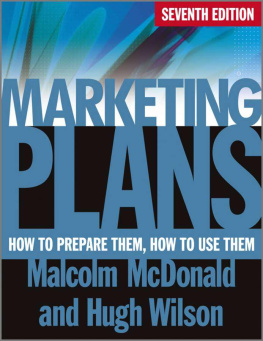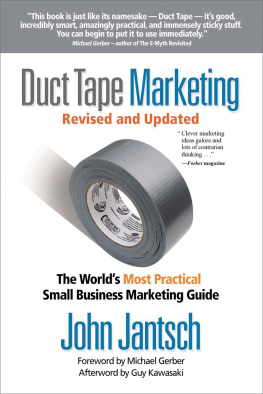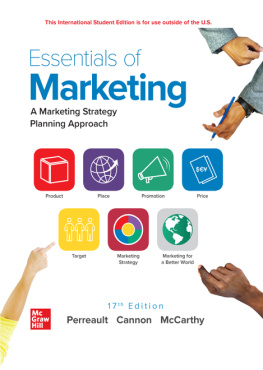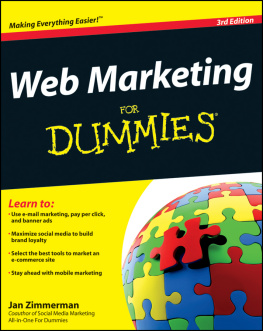Contents

This edition first published 2011
2011 Malcolm McDonald and Hugh Wilson
Registered office
John Wiley & Sons Ltd, The Atrium, Southern Gate, Chichester, West Sussex, PO19 8SQ, United Kingdom
For details of our global editorial offices, for customer services and for information about how to apply for permission to reuse the copyright material in this book please see our website at www.wiley.com .
The right of the author to be identified as the author of this work has been asserted in accordance with the Copyright, Designs and Patents Act 1988.
All rights reserved. No part of this publication may be reproduced, stored in a retrieval system, or transmitted, in any form or by any means, electronic, mechanical, photocopying, recording or otherwise, except as permitted by the UK Copyright, Designs and Patents Act 1988, without the prior permission of the publisher.
Wiley also publishes its books in a variety of electronic formats. Some content that appears in print may not be available in electronic books.
Designations used by companies to distinguish their products are often claimed as trademarks. All brand names and product names used in this book are trade names, service marks, trademarks or registered trademarks of their respective owners. The publisher is not associated with any product or vendor mentioned in this book. This publication is designed to provide accurate and authoritative information in regard to the subject matter covered. It is sold on the understanding that the publisher is not engaged in rendering professional services. If professional advice or other expert assistance is required, the services of a competent professional should be sought.
Library of Congress Cataloging-in-Publication Data
McDonald, Malcolm.
Marketing plans : how to prepare them, how to use them / Malcolm McDonald, Hugh Wilson. 7th ed.
p. cm.
Includes bibliographical references and index.
ISBN 978-0-470-66997-6 (pbk.)
1. MarketingManagement. 2. MarketingPlanning. I. Wilson, Hugh, 1962- II. Title.
HF5415.13.M255 2011
658.8'02dc22
2010050393
A catalogue record for this book is available from the British Library.
ISBN 9780470669976 (paperback), ISBN 9780470-67016-3 (ebk),
ISBN 9780470-67012-5 (ebk), ISBN 9780470-67011-8 (ebk)
Preface and acknowledgements
Please read this as it contains important information about this book.
The importance of marketing planning is demonstrated by the half million copies of this book which have been sold in English and many other languages since it was first published in 1984.
Since the books launch, it has helped and encouraged hundreds of thousands of practising managers with the difficult task of marketing planning. Many of them have been kind enough to write expressing their thanks for the books practical, no-nonsense style and approach to the subject. This has encouraged the first author, Malcolm McDonald, to update the book continually in previous editions, and in this edition to ask his esteemed colleague Professor Hugh Wilson to join him as co-author. Originally a computer scientist, Hugh brings to the book deep experience in the latest thinking on marketing in a digital world, including integrated marketing communications, e-commerce, multichannel strategy and CRM. The authors have been working together on how to evolve marketing planning in a digital world for over 20 years.
The purpose of this book is quite simply to explain and demonstrate how to prepare and use a marketing plan. It is equally relevant for consumer, service and industrial goods companies, as well as not-for-profit organizations, since the process is universal.
It is based on our research into the marketing planning practices of industrial, service and retail companies, which has revealed marketing planning as an area of major weakness. Almost without exception, companies that thought they were planning were in fact only forecasting and budgeting, and suffered grave operational difficulties as a result. The problem, as companies face up to the opportunities and challenges of the twenty-first century is not that the philosophy of marketing is not believed; rather it is that most companies, particularly industrial goods companies and many service organizations, have difficulty in making it work.
This is largely because of ignorance about the process of planning their marketing activities, for which little help is provided in the extant body of literature. Books or articles often turn out to be about the management of the several elements of the marketing mix rather than about how the process of combining them into a coherent plan can be managed. Others treat marketing planning in such a generalized way that it is difficult to distil from them any guidance of operational significance. Finally, there are many excellent papers about individual aspects of the marketing planning process.
The truth is, of course, that the actual process of marketing planning is simple in outline. Any book will tell us that it consists of: a situation review; assumptions; objectives; strategies; programmes; and measurement and review. What other books do not tell us is that there are a number of contextual issues that have to be considered that make marketing planning one of the most baffling of all management problems.
Here are some of those issues:
- When should it be done, how often , by whom , and how ?
- Is it different in a large and a small company?
- Is it different in a diversified and an undiversified company?
- Is it different in an international and a domestic company?
- What is the role of the chief executive ?
- What is the role of the planning department ?
- Should marketing planning be top-down or bottom-up ?
- What is the relationship between operational (one year) and strategic (longer term) planning?
Since effective marketing planning lies at the heart of a companys revenue-earning activities, it is not surprising that there is a great demand for a guide which strips away the confusion and mystery surrounding this subject and helps firms to get to grips with it in a practical and down-to-earth manner.
This book explains what marketing is, how the marketing planning process works, how to carry out a marketing audit, how to set marketing objectives and strategies, how to schedule and cost out what has to be done to achieve the objectives, and how to design and implement a simple marketing planning system.
Our approach is both logical and practical. This view has been confirmed by the hundreds of letters referred to above, and by the fact that this book is now a standard text on many marketing courses in universities, and in-company training programmes around the world.
This book includes:
- Application questions, to help you personalise the learning
- Exercises at the end of every chapter to enable practising managers to translate the theory into practice
- Mini case studies to exemplify the points being made
- A step-by-step process, with templates, for producing marketing plans
Additionally, a comprehensive online Tutors Guide is available for those who wish to teach the subject to others. This Tutors Guide contains lecture plans, PowerPoint masters, case studies, tutors discussion points and additional assignments for use by tutors. Please visit www.marketingplansbook.com .
We should like to thank our friends and colleagues for the advice they have given us and material they have generously allowed us to use during the life of this book. To the following we are especially grateful: Dr Chris Bailey, Dr Krista Bondy, Lindsay Bruce, Professor Martin Christopher, Professor Moira Clark, Professor Elizabeth Daniel, Dr Iain Davies, Matt Hobbs, Professor Aamir Khan, Ardi Kolch, John Leppard, Dr Emma Macdonald, Professor Simon Majaro, Dr Stan Maklan, Anne Mollen, Aly Moore, Peter Mouncey, Professor Adrian Payne, Beth Rogers, Professor Lynette Ryals, Dr Brian Smith, Rod Street and Diana Woodburn. To them and the many other scholars and practitioners who have contributed invaluable ideas in specific sections we will always be grateful. Rather than updating the flow of the text by providing complete individual references, we restrict ourselves to a few references at the end of each chapter. For fuller bibliographies, please see the PhD research on which this book is primarily based: details are available from .











